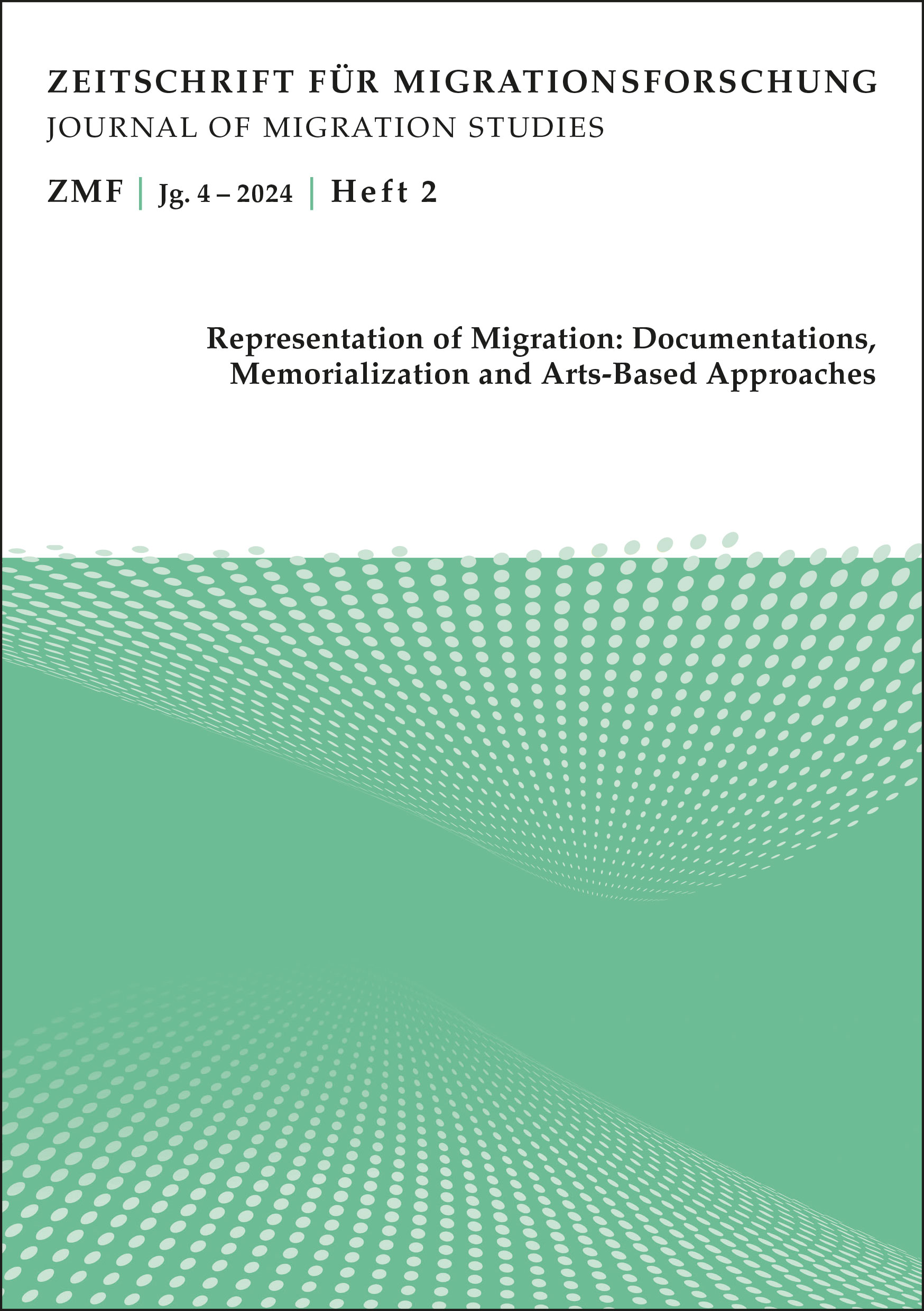Hauptsächlicher Artikelinhalt

Abstract
This article explores the representation of precarious living conditions and societal marginalization of migrants in photographs, as illustrated by a specific series of 30 black and white photo negatives taken by the Yugoslav photo reporter Jovan Ritopečki (1923–1989) on the periphery of Austria’s capital, Vienna, in 1973. These portray an accommodation for Yugoslav workers, stored in the photographer’s archives and entitled »the House of Horror«. Through the employment of exemplary microanalysis, the article demonstrates how specific photographic meanings are constituted through the intersection of practices, discourses, and modes of use. In this regard, the photographic depiction of migration experiences, the photographer’s methods of approaching the subject, as well as the photographs’ contexts of transmission are analyzed. Discussions will involve how Ritopečki’s photographs convey migrant experiences and to what extent the photographer’s biographical background and social positioning as a professional photographer and migrant himself, shaped his approach to the subject. The article demonstrates that analyzing the transnational context of transmission and use of the photographs helps to understand the historic horizons of meaning and expectations displayed in the pictures.
Am Rande: Jovan Ritopečkis Fotografien von migrantischen Wohnverhältnissen im Wien der 1970er Jahre
Dieser Beitrag untersucht die Darstellung prekärer Lebensbedingungen und gesellschaftlicher Marginalisierung von Migrant*innen in Fotografien. Den Ausgangspunkt bildet eine Serie von 30 Schwarz-Weiß-Negativen, die der jugoslawische Fotoreporter Jovan Ritopečki (1923–1989) in einer Unterkunft für jugoslawische Migrant*innen an der Peripherie der österreichischen Hauptstadt Wien im Jahr 1973 aufgenommen und in seinem fotografischen Archiv mit dem schriftlichen Hinweis »Haus-des-Schreckens« abgelegt hat. Anhand einer exemplarischen Mikroanalyse soll aufgezeigt werden, wie sich spezifische fotografische Bedeutungen in einem Feld miteinander verwobener Praktiken, Diskurse und Gebrauchsweisen konstituieren. Dafür werden die Darstellung von Migrationserfahrungen im Medium der Fotografie, die konkreten Bildpraxen des Fotografen und die Kontexte der Überlieferung analysiert. Es wird untersucht, wie sich Erfahrungen der gesellschaftlichen Marginalisierung im Bild zeigen und inwiefern die soziale Positioniertheit des Fotografen, der sowohl professioneller Fotograf war als auch selbst über Migrationserfahrung verfügte, seine Herangehensweise an das Thema geprägt haben. Der Beitrag zeigt, dass die Analyse des transnationalen Verbreitungs- und Nutzungskontextes der Fotografien dazu beiträgt, den historischen Deutungs- und Erwartungshorizont zu verstehen, in dem die Bilder wirkten.
